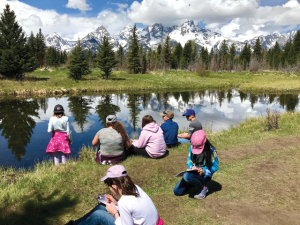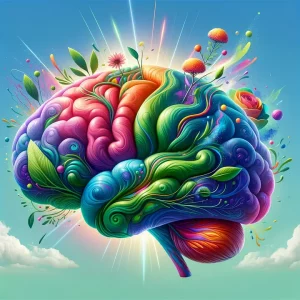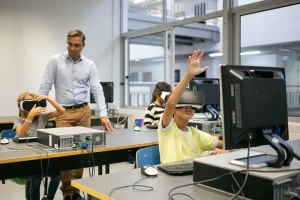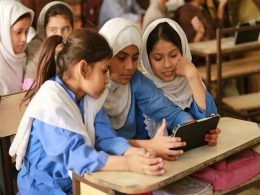Introduction:
The world is a tapestry woven with threads of unique cultures, experiences, and abilities. Just as this diversity enriches our collective experience, it demands an education system that empowers each individual to flourish, regardless of background, learning style, or ability. This article delves into the realm of “innovative education for a diverse world,” exploring the doors it unlocks and the minds it ignites.
The Inevitable Shift: Why Traditional Education Falls Short

For decades, education has largely adhered to a standardized model, prioritizing rote memorization and uniform assessments. This one-size-fits-all approach, while offering structure and familiarity, fails to cater to the diverse needs and learning styles present in every classroom. Students with disabilities, for example, may struggle with traditional methods, while gifted learners crave deeper challenges. This mismatch leaves many students feeling disengaged and under-stimulated, hindering their potential for true growth.
Education Unlocking the Doors:
The answer lies in embracing innovation. By incorporating diverse teaching methods, fostering inclusivity, and leveraging technology, we can unlock a world with Education of learning opportunities for all.
Personalized Education Learning:
Imagine a classroom where every student receives a learning experience tailored to their strengths and weaknesses. Personalized learning platforms and differentiated instruction allow students to progress at their own pace, exploring topics that pique their curiosity and solidifying areas needing support.
Universal Design for Learning Education(UDL):

This framework removes barriers to learning by providing multiple means of engagement, representation, and action. Consider a history lesson: some students might excel with visuals, while others thrive through interactive activities. UDL ensures every learner accesses and processes information effectively.
Technology as a Tool, Not a Crutch:
Technology is no longer a novelty in classrooms; it’s a powerful tool for enhancing learning. From assistive technologies like screen readers to collaborative platforms like online learning communities, technology creates new avenues for engagement and inclusivity.
Embracing Culturally Responsive Education:
Recognizing and celebrating cultural diversity within the classroom fosters a sense of belonging and empowers students to learn from different perspectives. Integrating diverse literature, celebrating cultural traditions, and inviting guest speakers from various backgrounds enriches the learning environment for all.
Igniting Minds: Fostering a Growth Mindset

Beyond unlocking doors, innovative education ignites minds by nurturing a growth mindset. This belief that intelligence is not fixed but can be developed through effort and perseverance fosters resilience, critical thinking, and a love for learning.
Project-Based Learning:
Immersing students in real-world projects allows them to apply their knowledge, collaborate with peers, and develop valuable problem-solving and communication skills. Imagine tackling environmental challenges or designing a sustainable city – these projects ignite passion for learning and make a lasting impact.
Inquiry-Based Learning:
Encouraging students to ask questions, explore possibilities, and seek solutions fosters curiosity and critical thinking. Instead of passively receiving information, students become active participants in the learning process, discovering the thrill of knowledge creation.
Mentorship and Social-Emotional Learning:
Providing students with mentors and fostering a supportive learning environment allows them to thrive emotionally and socially. Mentors guide and motivate, while social-emotional learning programs equip students with essential skills like self-awareness, empathy, and conflict resolution.
Beyond the Classroom: Building a Collaborative Ecosystem

Fostering innovative education requires a collaborative effort beyond the classroom walls. Parents, educators, administrators, and policymakers must work together to create a system that supports all learners.
Professional Development for Educators:
Equipping educators with the knowledge and skills necessary to implement innovative practices is crucial. Ongoing professional development programs focused on inclusive pedagogy, technology integration, and differentiated instruction empower educators to become changemakers.
Community Partnerships:
Collaborations with community organizations can provide valuable resources and opportunities for students. From guest speakers to internships, these partnerships broaden horizons and expose students to diverse perspectives and career possibilities.
Advocacy and Policy Change:

Systemic change requires strong advocacy for policies that prioritize inclusive education and equitable access to resources. Supporting organizations and initiatives that promote innovative practices and fight for educational equity is vital in building a truly diverse and inclusive learning environment.
Conclusion:
The journey towards innovative education for a diverse world is ongoing. It requires continuous learning, collaboration, and a commitment to equity. Yet, the potential rewards are immense. By unlocking doors and igniting minds, we can cultivate a generation of learners who are adaptable, resourceful, and prepared to thrive in a rapidly changing world, regardless of their background or ability. Let us embrace the tapestry of diversity and weave a future where every thread shines, empowered by the transformative power of education.










